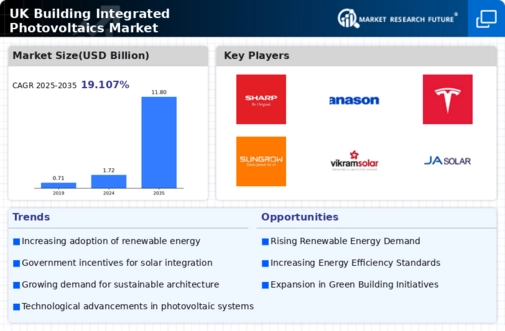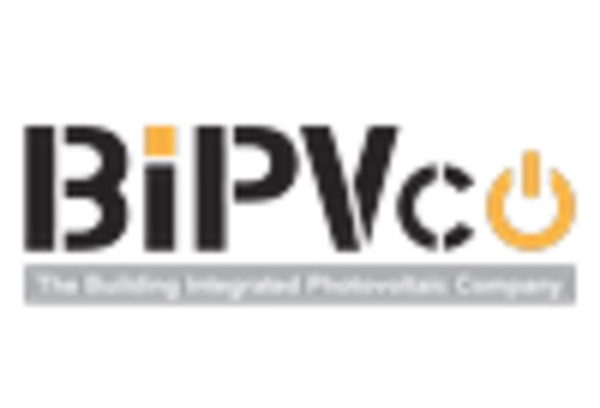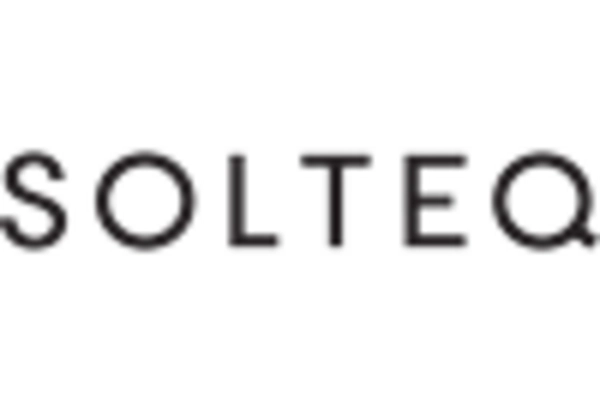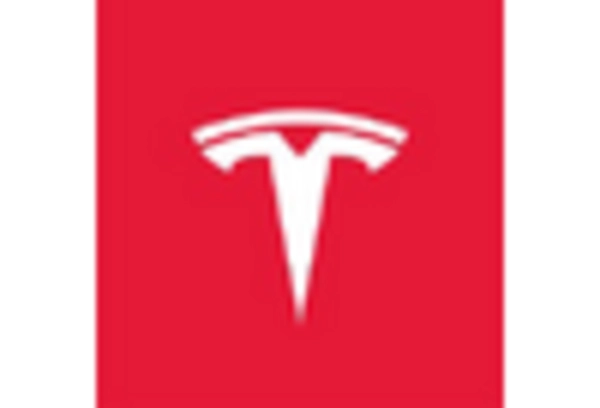The building integrated-photovoltaics market is currently characterized by a dynamic competitive landscape, driven by increasing demand for sustainable energy solutions and innovative architectural designs. Key players such as Tesla (US), SunPower (US), and Onyx Solar (ES) are at the forefront, each adopting distinct strategies to enhance their market presence. Tesla (US) focuses on integrating solar technology with its energy storage solutions, thereby promoting a holistic approach to energy management. SunPower (US) emphasizes high-efficiency solar panels and has recently expanded its product line to include building-integrated options, reflecting a commitment to innovation. Onyx Solar (ES) specializes in architectural integration, offering customized solutions that blend seamlessly with building aesthetics, which positions them uniquely in the market.
The business tactics employed by these companies include localizing manufacturing to reduce costs and enhance supply chain efficiency. The market structure appears moderately fragmented, with several players vying for market share, yet the influence of major companies is substantial. This competitive environment fosters innovation and encourages smaller firms to adopt advanced technologies to remain relevant. The collective strategies of these key players not only shape their individual trajectories but also influence the overall market dynamics, pushing for advancements in product offerings and customer engagement.
In October 2025, Tesla (US) announced a partnership with a leading architectural firm to develop a new line of solar roof tiles designed specifically for urban environments. This strategic move is likely to enhance Tesla's visibility in the building integrated-photovoltaics sector, as it aligns with the growing trend of urbanization and the need for sustainable building solutions. By collaborating with architects, Tesla aims to ensure that its products meet aesthetic and functional requirements, potentially increasing adoption rates among urban developers.
In September 2025, SunPower (US) launched a new initiative aimed at providing financial incentives for residential customers who opt for building integrated photovoltaics. This initiative is significant as it not only encourages adoption but also positions SunPower as a leader in customer-centric solutions. By reducing the financial barriers associated with solar installations, SunPower may enhance its market share and foster long-term customer loyalty, which is crucial in a competitive landscape.
In August 2025, Onyx Solar (ES) secured a major contract for the supply of solar glass for a high-profile commercial project in London. This contract underscores Onyx's strategic focus on large-scale projects and its ability to deliver customized solutions that meet specific architectural needs. Such contracts not only bolster revenue but also enhance brand reputation, positioning Onyx as a go-to provider for innovative building integrated solutions.
As of November 2025, the competitive trends in the building integrated-photovoltaics market are increasingly defined by digitalization, sustainability, and the integration of AI technologies. Strategic alliances are becoming more prevalent, as companies recognize the value of collaboration in driving innovation and expanding market reach. Looking ahead, competitive differentiation is likely to evolve from traditional price-based competition to a focus on technological innovation, product reliability, and supply chain resilience. This shift suggests that companies that prioritize R&D and customer engagement will be better positioned to thrive in an increasingly competitive environment.

















Leave a Comment